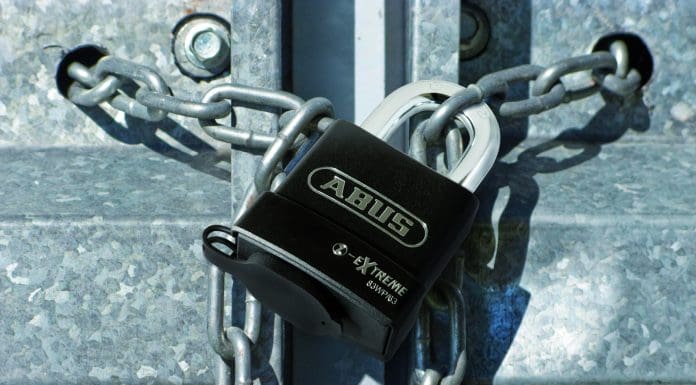Paul Spencer, marketing director for ABUS in the UK & Ireland, talks about the importance of a robust physical security programme
ABUS is a global manufacturer of high quality, innovative security, access and safety solutions with 100 years’ history of innovation. In both 2023 and 2024, ABUS has announced a range of new high security padlocks certified to the LPCB standard, a benchmark for security standards in the critical national infrastructure market space.
In an era defined by technological progress and interconnectivity, the imperative to secure critical national infrastructure has never been more pronounced. Within this framework, the significance of employing high security products, such as advanced padlocks, takes centre stage as a paramount measure to fortify the foundation of a nation’s essential services.
Securing physical access points
As we increasingly rely on digital networks, the significance of fortifying physical access points within critical infrastructure cannot be overlooked. High security padlocks serve as the first line of defence against unauthorised entry, mitigating the risk of physical breaches that could compromise sensitive areas of vital importance, from energy facilities to transportation hubs.
Preventing tampering and sabotage
High security padlocks are designed with sophisticated features to resist tampering and withstand malicious attempts at sabotage. In critical infrastructure, where the repercussions of tampering can be severe, these advanced locking mechanisms provide an additional layer of protection, deterring potential threats and enhancing overall security.
Integration with advanced access control systems
The modernisation of critical infrastructure often involves the implementation of advanced access control systems. High security padlocks are integral components of these systems, seamlessly integrating with electronic access controls to create a robust security infrastructure. This synergy ensures a comprehensive approach, addressing both physical and digital aspects of security.
Deterrence against theft and vandalism
Beyond safeguarding against intentional harm, high security padlocks play a crucial role in preventing theft and vandalism. In critical infrastructure sectors like energy and telecommunications, where valuable equipment is housed, the use of advanced padlocks serves as a deterrent, protecting assets that are pivotal for the uninterrupted functioning of essential services.
Compliance with regulatory standards
Many critical infrastructure sectors are subject to stringent regulatory standards and compliance requirements. High security padlocks, built to meet and exceed these standards, provide a tangible means for infrastructure operators to demonstrate their commitment to security and adherence to regulatory guidelines. This not only ensures the resilience of critical systems but also fosters public confidence in the reliability of national infrastructure.
The Loss Prevention Certification Board (LPCB) has been working with industry and government for more than 100 years to set the standards needed to ensure that fire and security products and services perform effectively and offering independent third-party approval confirming that products have met and will continue to meet these standards. To become approved by the LPCB, a product must withstand a suite of demanding physical attack tests, proving its ability to withstand manipulation and assault and representing the highest level of security standards.
“High security padlocks serve as the first line of defence against unauthorised entry, mitigating the risk of physical breaches that could compromise sensitive areas of vital importance, from energy facilities to transportation hubs.”
Enhancing emergency preparedness
In times of crisis or emergency, the swift response of emergency services depends on unimpeded access to critical infrastructure. High security padlocks contribute to emergency preparedness by securing access points, enabling rapid response teams to navigate through secured areas without delays, ensuring a more efficient and effective response to critical situations.
The extremely robust Rock 83/70 padlock offers reliable protection for valuable goods in warehouses, on construction sites and elsewhere. Its interchangeable cylinder makes key management easier.
In conclusion, the integration of high security padlocks into the protection strategy of critical national infrastructure is an indispensable component of national resilience. As technology advances and potential threats evolve, investing in these advanced physical security measures is not just a precautionary step but a proactive commitment to the safeguarding of a nation’s core assets. The resilience of critical infrastructure is, in many ways, contingent on the strength and sophistication of the locks that guard its vital access points.
Paul Spencer
Marketing Director
ABUS (UK) Ltd
The post The crucial role of high security padlocks in critical infrastructure protection appeared first on Planning, Building & Construction Today.


